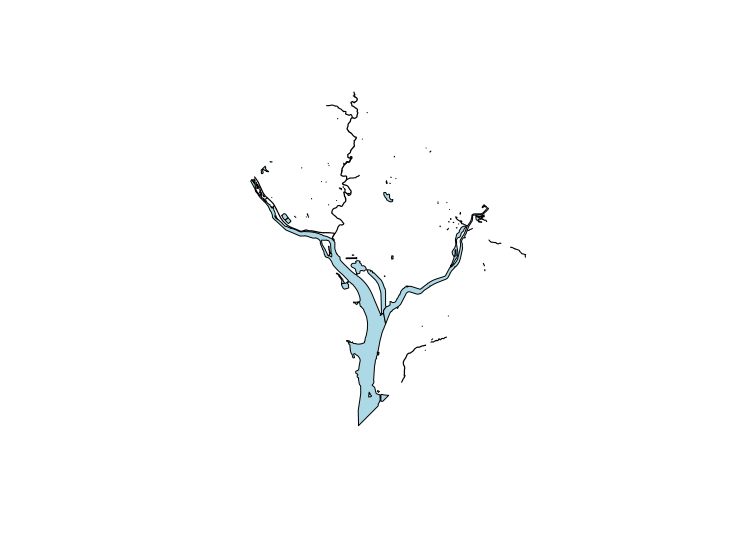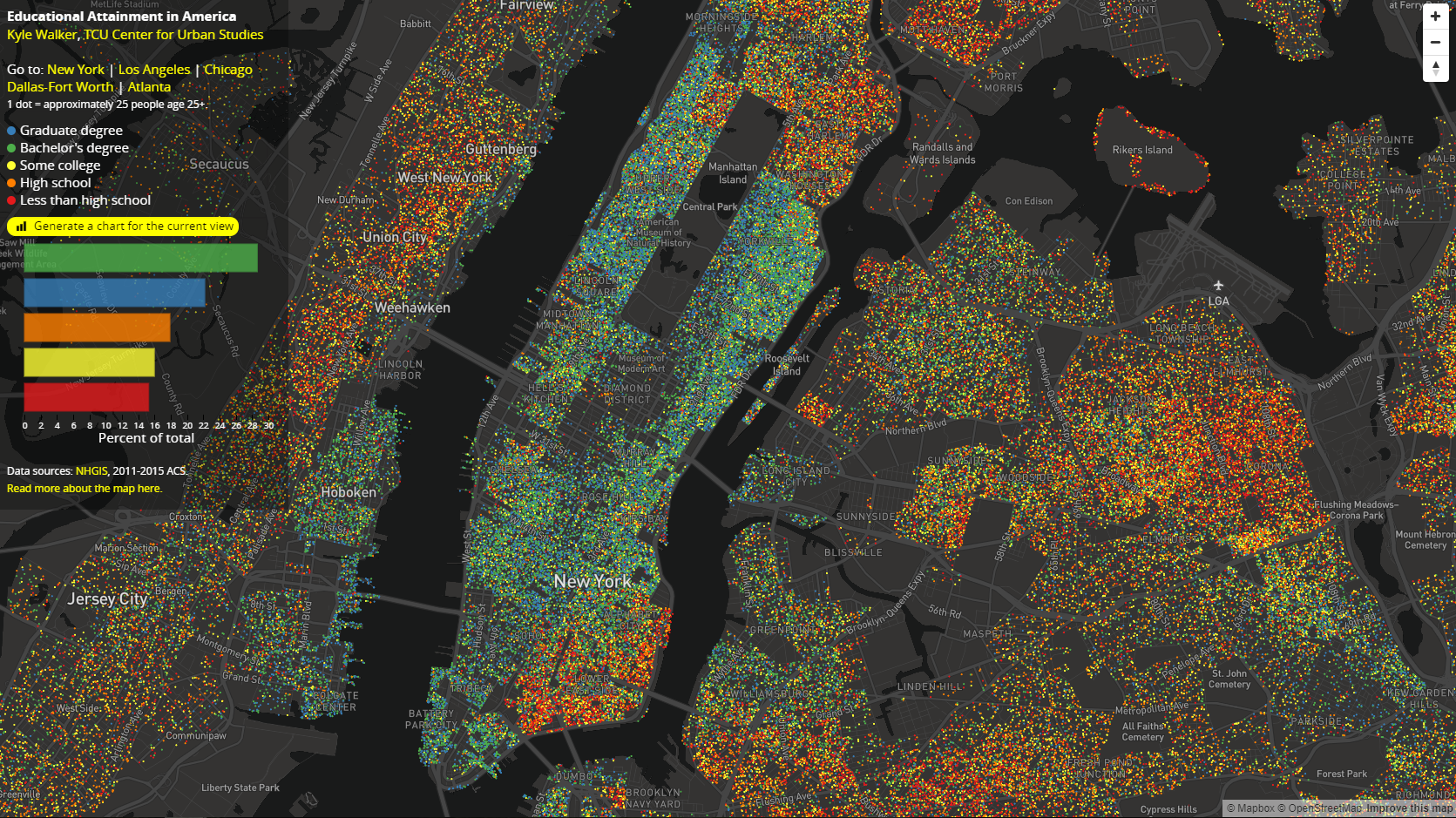Cartographic workflows with tigris and tidycensus
Analyzing US Census Data in R

Kyle Walker
Instructor
Generating random dots with sf
Key function for random point generation in sf: st_sample()
dc_dots <- map(c("White", "Black", "Hispanic", "Asian"), function(group) {
dc_race %>%
filter(variable == group) %>%
st_sample(., size = .$value / 100) %>%
st_sf() %>%
mutate(group = group)
}) %>%
reduce(rbind)
Considerations for random dot generation
For faster plotting:
dc_dots <- dc_dots %>%
group_by(group) %>%
summarize()
For more accurate visualizations:
dc_dots_shuffle <- sample_frac(dc_dots, size = 1)
Basic dot-density mapping with sf
plot(dc_dots_shuffle, key.pos = 1)

Ancillary data with tigris
options(tigris_class = "sf") dc_roads <- roads("DC", "District of Columbia") %>% filter(RTTYP %in% c("I", "S", "U"))dc_water <- area_water("DC", "District of Columbia")dc_boundary <- counties("DC", cb = TRUE)
Ancillary data with tigris
plot(dc_water$geometry, col = "lightblue")

Dot-density mapping with ggplot2
ggplot() +
geom_sf(data = dc_boundary, color = NA, fill = "white") +
geom_sf(data = dc_dots, aes(color = group, fill = group), size = 0.1) +
geom_sf(data = dc_water, color = "lightblue", fill = "lightblue") +
geom_sf(data = dc_roads, color = "grey") +
coord_sf(crs = 26918, datum = NA) +
scale_color_brewer(palette = "Set1", guide = FALSE) +
scale_fill_brewer(palette = "Set1") +
labs(title = "The racial geography of Washington, DC",
subtitle = "2010 decennial U.S. Census",
fill = "",
caption = "1 dot = approximately 100 people.\nData acquired with
the R tidycensus and tigris packages.")

Considerations for dot-density mapping
- Be mindful of ways dot-density maps can be misinterpreted
- Choose qualitative colors wisely
- Take care when selecting ancillary layers
Let's practice!
Analyzing US Census Data in R


